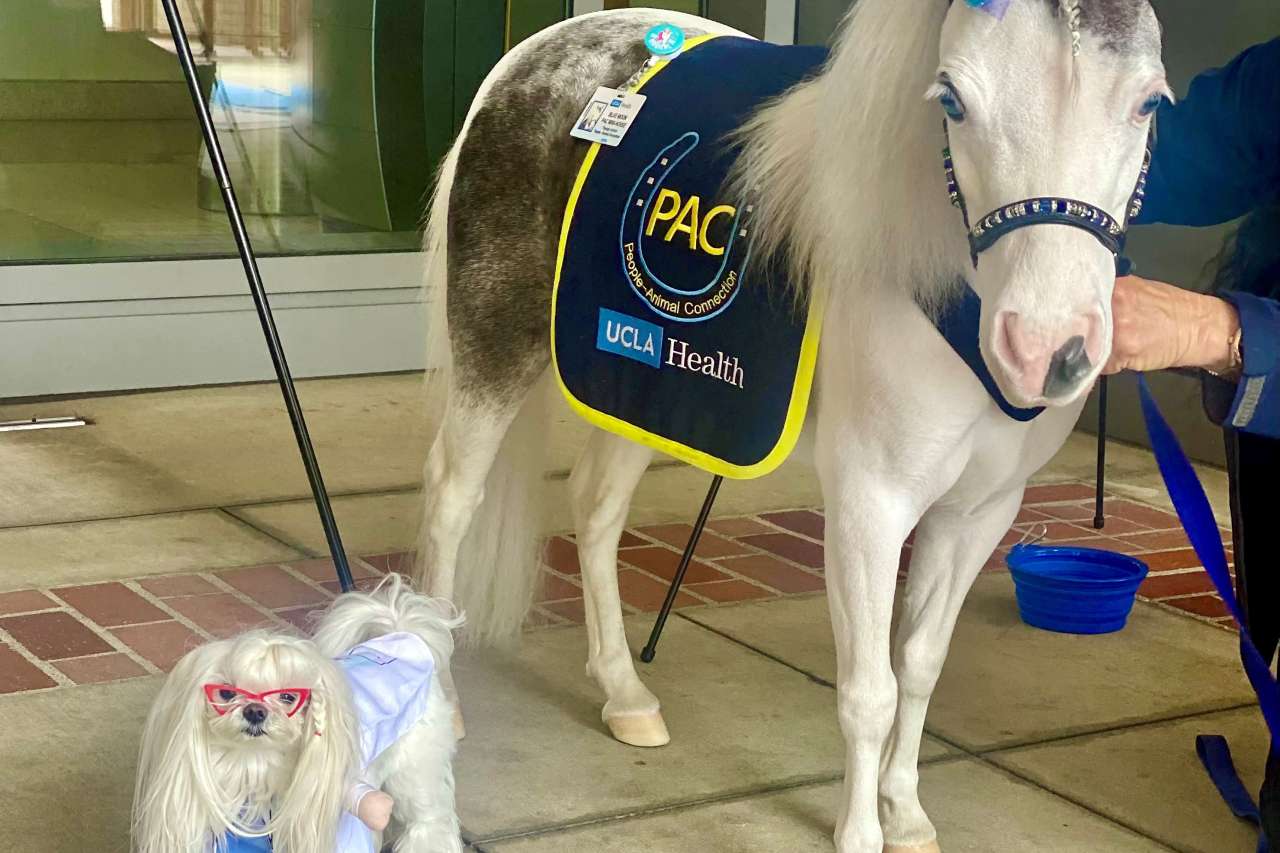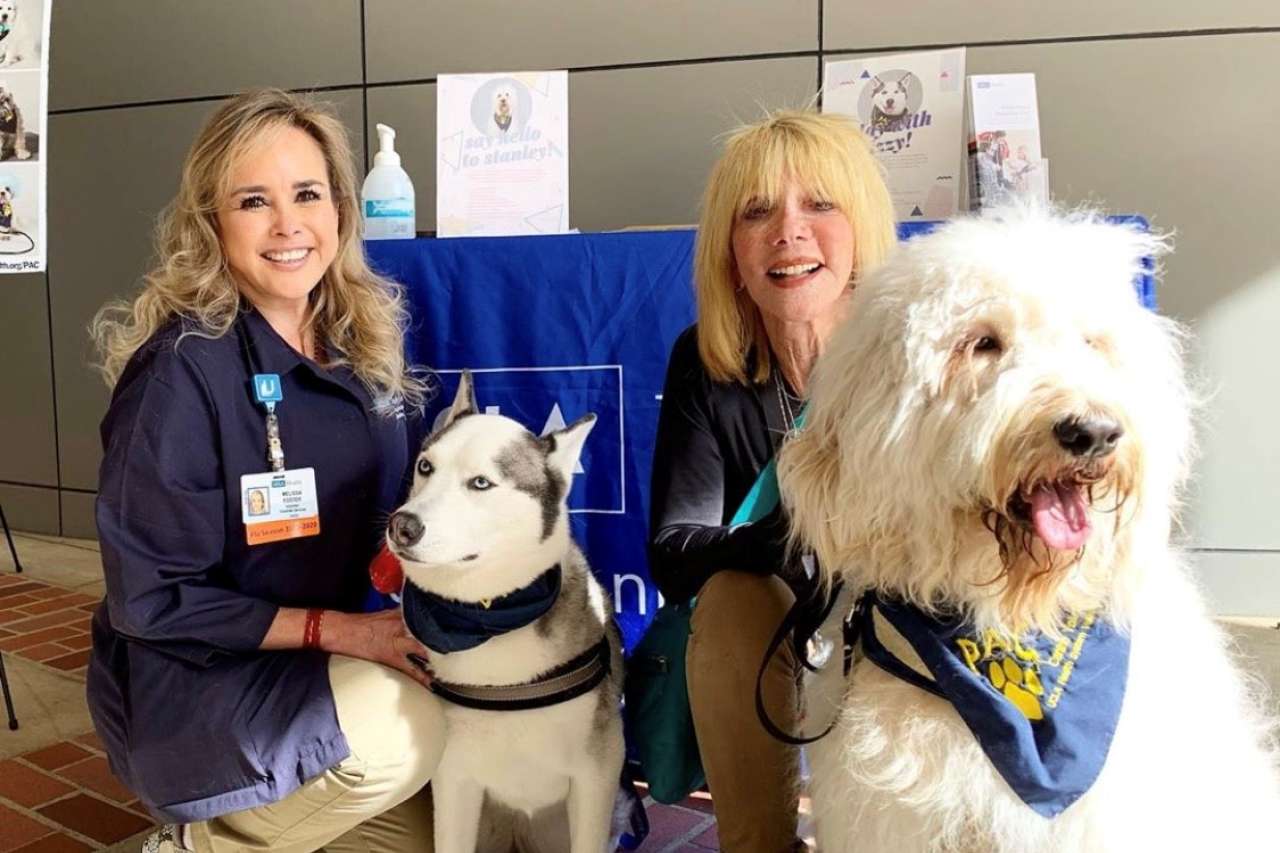UCLA People-Animal Connection
When it comes to healing, dogs may be the best medicine.

The PAC is back!
Our paws are back in the hospital, and with a few new faces - like little Abby pictured here with Blue Moon! We are thrilled to be making in-person visits with our patients and staff once again. Look out for our PAC teams around either hospital or at our monthly visit stations, which are the last Thursday of the month at Ronald Reagan, and the last Tuesday of the month in Santa Monica!
Help PAC continue to make visits to hospital patients, students, and people throughout the community
Pet Visit Stations
The People-Animal Connection hosts monthly Pet Visit Stations at both Ronald Reagan UCLA Medical Center, and at UCLA Medical Center Santa Monica. These visit stations are held on the last Thursday of each month at Ronald Reagan near the Resnick Neuropsychiatric Hospital entrance. In Santa Monica, the visit station takes place on the last Tuesday of each month in the 16th Street Gardens. Patients, visitors, and staff are invited to stop by the visit station between 11:30am and 1:30pm to spend some time de-stressing with a few of PAC’s 75 therapy dogs.

Donate to PAC
PAC teams make more than 1,000 patient visits per month, seeing more than 12,000 critically ill children and adult patients a year.
Support the PAC Program today.
